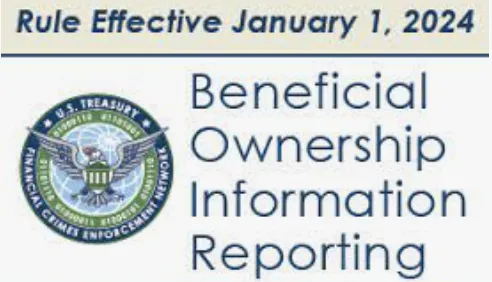Summary
Annual reports of their operations to the Internal Revenue Service (IRS) are required, even for non-profit organizations exempt from federal income tax. Some tax-exempt organizations must use Form 990, Return of Organization Exempt From Income Tax, for annual reporting.
Nonprofit organizations in the United States use Form 990 to provide the IRS with thorough financial and operational information about their operations. This form promotes transparency and accountability in the nonprofit sector because it is publicly available and includes information about an organization’s finances, governance, and mission.
Key Takeaways
- A yearly information return Form 990 or 990-EZ or an annual electronic notice Form 990-N must be filed by most organizations exempt from income tax under Section 501(a), depending on the organization’s gross receipts and total assets.
- Form 990 is generally due on the 15th day of the fifth month after the end of the organization’s fiscal year.
- If an organization fails to file an annual return or submit a notice as required for three consecutive years, its tax-exempt status is automatically revoked on and after the deadline for filing its third annual return or notice. An organization that has lost its tax-exempt status can apply for reinstatement; however, it must still settle income tax obligations and file the required income tax returns.
- Late filing of Form 990 will result in a penalty of $20 per day, up to a maximum of $12,000, or 5% of the organization’s annual gross receipts. The penalty may be waived if the organization can show that the delay was due to a reasonable cause. Organizations with annual gross receipts greater than $1,208,500 are subject to a higher daily penalty of $120, up to a maximum of $60,000 per return or 5% of gross receipts for the year.
What is Form 990, and why is it important?
Most organizations exempt from income tax under Section 501(a), as well as particular political organizations and nonexempt charitable trusts, file Form 990 annually to provide the IRS with the data required by IRC Section 6033. According to Section 6033, tax-exempt organizations must file an annual return detailing their gross income, receipts, and disbursements. Form 990 is the primary source of information for the public about tax-exempt organizations. When filing Form 990, organizations are required to make it accessible to the public for three years following the deadline (including any extensions) or, if filed later, the actual filing date.
Form 990 is essential to many stakeholders for the following reasons:
- Financial Transparency: The Form 990 provides a platform for nonprofit organizations to demonstrate financial transparency. It requires detailed disclosure of the organization’s financial activities, including revenue sources, expenses, assets, and liabilities. This transparency builds donor and public confidence by showcasing responsible financial management.
- Operational Accountability: Nonprofit organizations use Form 990 to outline their mission, programs, and accomplishments. This provides insight into how the organization is fulfilling its stated purpose and making a positive impact. It enables stakeholders to understand the organization’s activities and effectiveness.
- Leadership and Governance: The nonprofit organization’s governance structure, including the board members, employees, and possible conflicts of interest, is covered in detail in Form 990. This information ensures that the organization is led by individuals with the expertise and dedication needed to achieve its mission.
- Tax-Exempt Status Maintenance: By filing Form 990, nonprofit organizations affirm their eligibility for tax-exempt status. The form provides the IRS with information demonstrating the organization’s compliance with tax-exempt regulations. Accurate filing is critical to keeping this status.
- Public Accessibility: Form 990 is publicly accessible, allowing anyone to review a nonprofit’s financials and activities. This transparency encourages donors, grantors, volunteers, and the general public to make informed decisions, thereby increasing accountability in the nonprofit sector.
Who must file Form 990?
Form 990 or Form 990-EZ must be filed by most organizations exempt from income tax under Section 501(a), depending on their gross receipts and total assets. These entities, known as 501(c)(3) organizations, are primarily charitable, religious, educational, scientific, and other non-profit organizations.
The type of Form 990 that an organization must submit is determined by its total assets and gross receipts (revenues). Form 990 has several variants: 990-EZ, 990-N, and 990-PF.
- Form 990: Organizations with total assets of $500,000 or more or gross receipts of $200,000 or more at the end of the tax year typically file Form 990, except those qualified to file Form 990-N.
- Form 990-EZ, Short Form Return of Organization Exempt from Income Tax: Submitted by organizations with gross receipts below $200,000 and total assets below $500,000 at the end of the tax year. If an organization eligible to submit Form 990-N or Form 990-EZ chooses to file Form 990, it must file a complete return.
- Form 990-N (e-Postcard): This is a simplified version of Form 990 for small nonprofits with annual gross receipts of $50,000 or less.
- Form 990-PF: Regardless of their revenue, private foundations described in Section 501(c)(3) must file Form 990-PF.
While many tax-exempt organizations must file some version of Form 990 to report their financial activities and maintain their tax-exempt status, certain exceptions and categories of organizations are not required to file Form 990 or 990-EZ. Here are a few examples:
- Certain Religious Organizations: Churches, schools below college level affiliated with the church or operated by a religious order, and other religious organizations are generally exempt from filing Form 990. They are still required to maintain their tax-exempt status, but they follow different reporting requirements.
- Certain Government Entities: Governmental units and agencies, as well as some instrumentalities of a governmental unit, are not required to file Form 990.
- Subsidiaries of Larger Organizations: Some subsidiaries of larger organizations may be included in the group return of their parent organization, in which case they may not have an individual filing requirement.
- Organizations with Low Revenue: Small organizations with annual gross receipts (revenue) of less than $50,000 can file Form 990-N (e-Postcard) instead of the full Form 990. If foreign organizations and organizations based in US territories claim U.S. tax exemption or are IRS-recognized as tax-exempt and have gross receipts from US sources of $50,000 or less and no significant activity in the United States (excluding investment activity), they are typically required to submit Form 990-N.
- Some Supporting Organizations: Certain supporting organizations designed to support other tax-exempt organizations might be exempt from filing Form 990 if they meet specific requirements outlined by the IRS.
- Certain Political Organizations: Certain political organizations are not required to file Form 990. Instead, they might have specific reporting requirements under the Federal Election Commission (FEC) regulations.
- Certain organizations that file different kinds of annual information returns: A religious or apostolic organization described in Section 501(d) uses Form 1065, U.S. Return of Partnership Income. A stock bonus, pension, or profit-sharing trust that qualifies under Section 401 uses Form 5500, Annual Return/Report of Employee Benefit Plan. Private foundations exempt under Section 501(c)(3) and described in Section 509(a) use Form 990-PF.
How do I file Form 990?
Form 990 is required to be filed electronically.
Where can I find the most recent version of Form 990?
The IRS website provides the newest version of the form. Check back often because the forms are updated from time to time and the rules for filing can change. The IRS website also contains the instructions for the form.
When is the due date for filing Form 990?
The due date for filing Form 990 varies depending on the organization’s fiscal year. The standard due date is the 15th day of the fifth month after the end of the organization’s fiscal year. For instance, if the organization’s fiscal year ends on December 31, Form 990 is due on May 15 of the following year.
There are also extensions available under certain circumstances. If an organization needs more time to complete and file Form 990, it may file Form 8868, Application for Automatic Extension of Time to File an Exempt Organization Return, by the original due date to request an extension. The extension typically provides an additional six months to file.
For organizations in their first year of operation that still need to establish a fiscal year, the deadline to file Form 990 is generally the 15th day of the fifth month following the end of their first tax year. If the organization is liquidated, dissolved, or terminated, the return must be filed by the 15th of the fifth month following the event.
If the return is not filed by the due date (including any extension granted), provide a reasonable-cause explanation giving the reasons for the late filing.
What if I file Form 990 late?
An organization’s tax-exempt status is automatically revoked on and after the deadline for filing its third annual return or notice if it neglects to file an annual return or submit a notice as required for three consecutive years. If an organization’s tax-exempt status is lost, it may still be able to apply for reinstatement, but it will have to pay income taxes and file income tax returns. In addition, penalties for late filing may be imposed.
Is there a penalty if I do not file Form 990?
Under Section 6652(c)(1)(A), late filing returns incur a penalty of $20 per day, up to a maximum of $12,000 or 5% of the organization’s annual gross receipts. This penalty may be waived if the organization can show that the delay was due to a reasonable cause.
Organizations with over $1,208,500 in annual gross receipts face a higher daily penalty of $120 (maximum $60,000 per return or 5% of the organization’s gross receipts for the year). This penalty accumulates for each day after the due date that the return remains unfiled.
What if I make a mistake when filing Form 990?
You can amend the organization’s return for any year by filing a new return, including any necessary schedules. Use the Form 990 version that corresponds to the year being amended. The amended return must include all the information specified in the form and instructions, not just the updated or corrected information. In Item B of the form’s heading, check the box labeled “Amended return.” Additionally, specify which sections and schedules of Form 990 were amended and provide a description of the amendments on Schedule O (Form 990).
The organization may file an amended return at any time to modify or include additional information previously reported on a filed return for the same period. It must make the amended return available for inspection for three years from the filing date or three years from the original return’s due date, whichever is later.
The organization may file Form 4506, Request for Copy of Tax Return if it needs a complete copy of its previously filed return.
The organization must check the box labeled “Final return/terminated” in Item B in the heading area of the form and complete Schedule N (Form 990), Liquidation, Termination, Dissolution, or Significant Disposition of Assets if the return is a final return.
The organization may be required by law to send a copy of an amended Form 990 return (or information provided to the IRS to supplement the return) to the state with which it filed Form 990 to fulfill the reporting requirement of a state. Even if the Internal Revenue Service accepts the organization’s initial return, a state may still require the organization to submit an amended Form 990 to fulfill the state’s reporting requirements.
What are the common errors seen on Form 990?
Form 990 can be complex, and errors in its preparation and submission can lead to issues with compliance and potential penalties. Common errors on Form 990 include:
- Inaccurate Financial Information: Incorrect reporting of revenue, expenses, assets, liabilities, and net assets can distort the organization’s financial picture and lead to inaccurate assessments of its financial health.
- Misclassified Expenses: Expenses categorized incorrectly as program, management, or fundraising expenses can affect the organization’s ratios and raise concerns about resource allocation.
- Incorrect Identification of Key Individuals: Errors in listing board members, officers, key employees, and their compensation can lead to misrepresentation of the organization’s governance and leadership.
- Conflict of Interest Disclosures: Organizations that fail to disclose potential conflicts of interest involving board members, officers, or key employees may face ethical and compliance issues.
- Inadequate Program Description: People may misunderstand their purpose and impact if the organization’s mission and programs are not accurately described.
- Failure to Report Lobbying and Political Activities: Noncompliance with reporting requirements for lobbying and political activities can result in penalties and legal repercussions.
- Incorrect Public Support Calculation: Miscalculating public support percentages can impact the organization’s public charity status.
- Late or Incorrect Filing: Filing Form 990 late or with incorrect information can lead to penalties and damage the organization’s reputation for transparency.
- Inaccurate Reporting of Compensation: Errors in reporting the compensation of key individuals, particularly if it’s deemed excessive, can draw scrutiny.
- Lack of Schedules and Attachments: Failing to include required schedules or attachments, like the Schedule of Contributors, can lead to incomplete submissions.
- Unsubstantiated Expenditures: Deducting expenditures without proper documentation or substantiation can raise red flags during an audit.
- Missing or Incomplete Footnotes: Footnotes provide context for financial data and explanations for certain activities; their omission can result in misunderstandings.
To avoid these common errors, carefully review the Form 990 instructions, double-check all information, keep accurate records, and seek guidance from professionals familiar with nonprofit tax regulations if necessary.
What documents are required to file Form 990?
When filing Form 990, tax-exempt organizations are required to provide a comprehensive set of documents and information that offer insight into their financial activities, governance, and mission-related efforts. The necessary documents vary depending on the organization’s size and activities. Generally, the following documents and information are required:
- Financial Statements: A comprehensive financial report that includes cash flow, balance sheet, and income statement provides information on the organization’s financial condition.
- Revenue Breakdown: A comprehensive breakdown of revenue sources, such as donations, grants, program revenue, and investment income, helps assess the organization’s funding streams.
- Cost Breakdowns: Categorized expense breakdowns that include program services, management, fundraising, and other costs make resource allocation clear.
- Key Personnel List: Names, titles, addresses, and compensation details of board members, officers, key employees, and highest-compensated individuals demonstrate the organization’s leadership.
- Governance and Policies: Documentation of governance practices, including conflict of interest and whistleblower policies, highlights transparent and ethical management.
- Mission and Programs Description: An outline of the organization’s mission, objectives, and significant programs showcases its activities and impact.
- Schedule of Contributors: A list of major contributors provides transparency regarding the sources of financial support.
- Assets and Liabilities Overview: A summary of assets and liabilities provides insights into the organization’s financial position.
- Functional Expenses Breakdown: An expense breakdown by function (e.g., program services, management) reveals resource allocation strategies.
- Compensation Details: Compensation data for key individuals, including salary, benefits, and other compensation forms, demonstrates responsible governance.
- Public Support Information: Public support documentation, including grants and contributions, illustrates community engagement.
- Information on Lobbying and Political Activities: If applicable, information about lobbying and political involvement highlights the organization’s advocacy efforts.
- Documentation for Grants and Contributions: Details about grants awarded and contributions made, including purpose and recipients, showcase philanthropic initiatives.
- Additional Attachments: Further attachments or schedules may be required to provide specific information depending on the organization’s activities.
Gathering these documents and information helps create a comprehensive and accurate portrayal of the organization’s operations, allowing the IRS and stakeholders to assess its compliance and impact. It’s essential to consult the specific Form 990 instructions relevant to the organization’s circumstances to ensure complete and accurate reporting.
Can Cleer help me file Form 990?
YES! CLEER provides flat-rate Corporate income tax preparation for non-profits and corporations. Cleer not only ensures that your return undergoes due diligence, but we also guarantee the accuracy of our work.
Cleer provides accurate, affordable, and efficient accounting and tax services for U.S. businesses and subsidiaries to help entrepreneurs do it right from the start.
We also offer all-inclusive bookkeeping packages, which include your monthly statements plus your federal and state tax returns. If you need help getting up to date on your books, we also offer support for companies that have fallen behind on their bookkeeping with our bookkeeping catch-up package.
If you need any help reducing your tax liability, schedule a consultation, or feel free to contact us.






